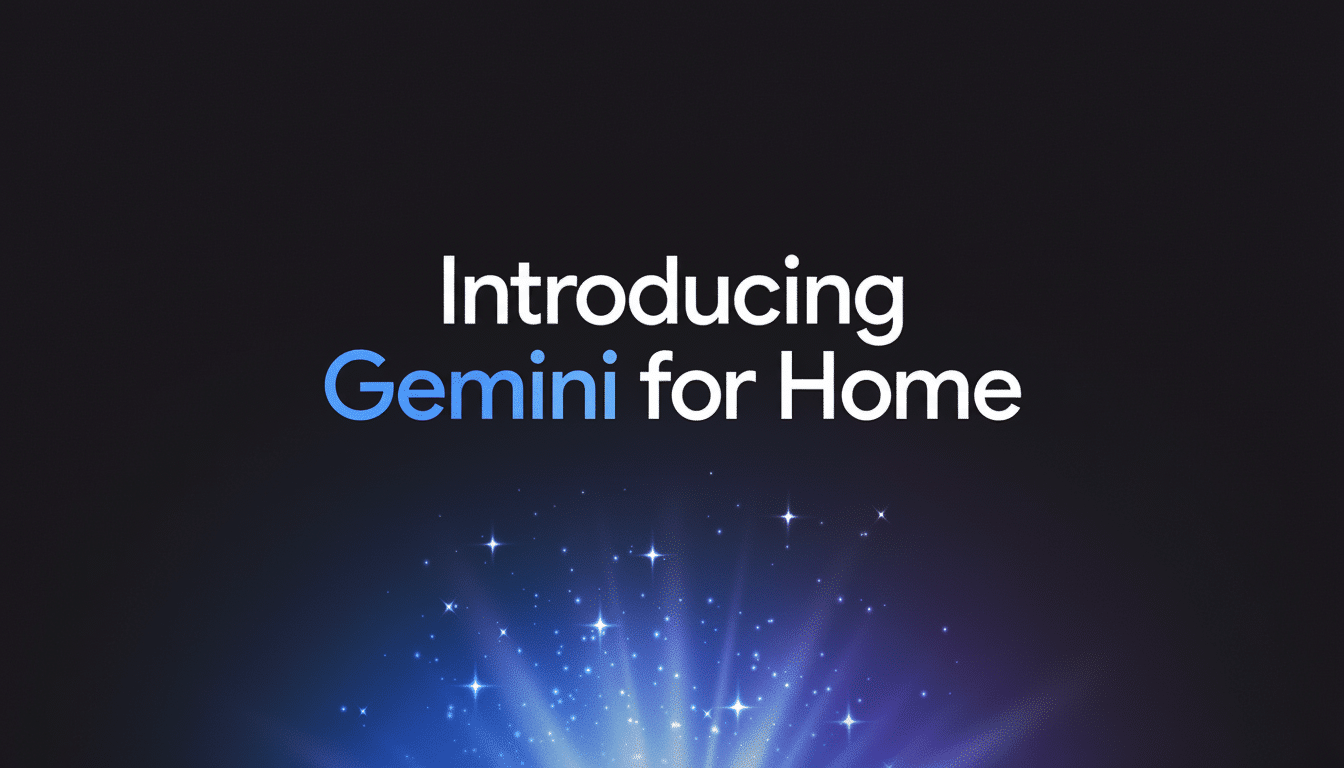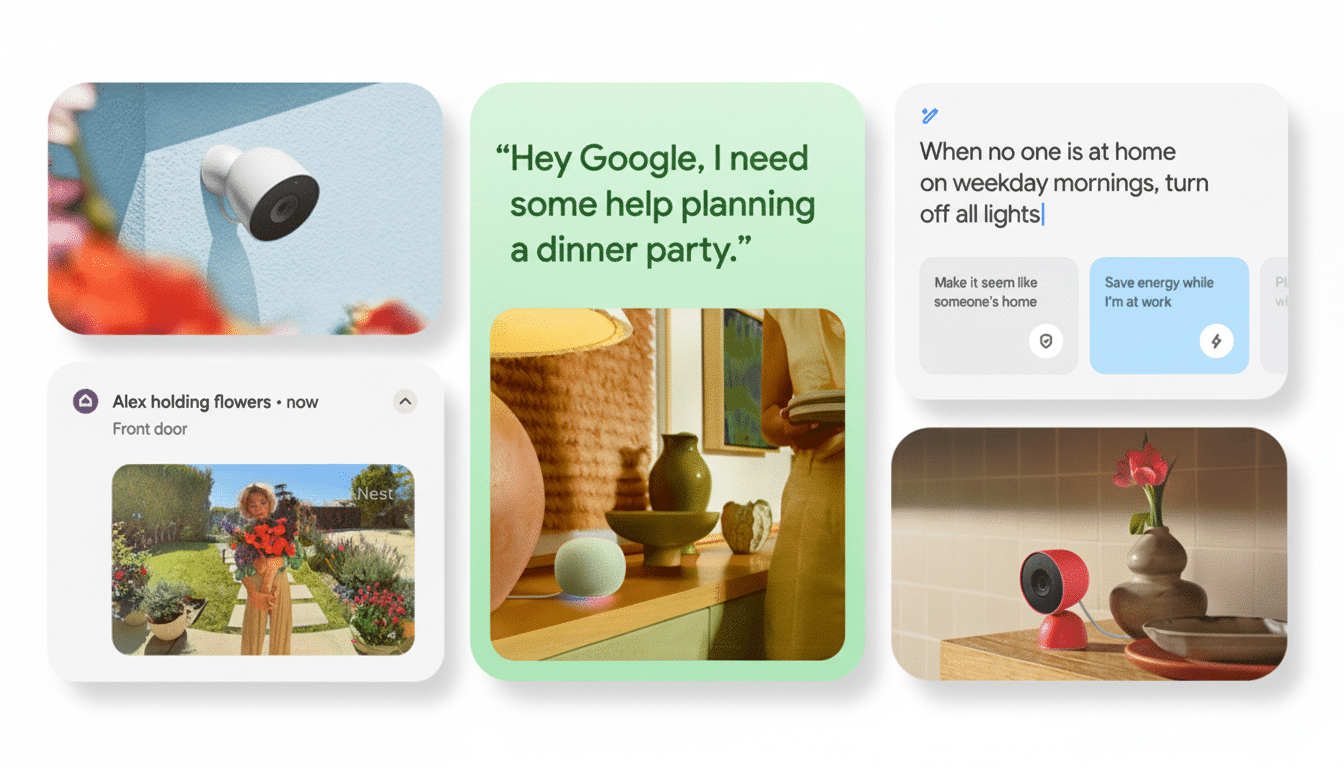Google has provided answers to the whirlwind of questions generated regarding its recent smart home extravaganza, detailing what users can expect from Gemini for Home, how Google Home Premium subscriptions function and which devices are supported.
The company wrote up a detailed Q&A on its community forum to help clear things up following announcements of updates across cameras, speakers and the Google Home app.

The headline takeaway: Gemini for Home is starting to get into cameras, doorbells, speakers and displays, with a free tier that includes the basics available for everyone and paid tiers offering more advanced features. At the same time, Nest Aware turns into Google Home Premium and continues to bundle subscriptions more directly with Google’s wider AI offerings.
Gemini for Home rollout details and Early Access
Google explains Gemini for Home as an AI layer that serves context-aware help to your devices. Think intelligent alerts from cameras, more natural voice interaction on speakers, and proactive suggestions that adapt to what’s happening in the home itself or around it. Critically, Google promises that basic Gemini-powered capabilities will still be made available to customers who don’t want to subscribe and that premium tiers will simply unlock more intelligence.
It is a staged rollout by device category and region. Cameras and doorbells are first up, followed by speakers and smart displays. Google is also conducting an Early Access program: Open the Google Home app (version 4.0 or higher), head to Settings, and click Early Access to sign up for it. The company notes that this program is different than the Google Home Public Preview, which does app features only. Early Access sign-ups are available in a few countries now, and will be rolling out to more markets incrementally.
For people wondering about its real-world application, picture a Nest Doorbell spotting some kind of significant action, and then telling you what it sees in brief so you can skim or inquire about it on your Nest Hub. That’s the kind of time-saving lift Google is going for as it begins to layer Gemini across the home.
What is Google Home Premium and how it replaces Nest Aware
Google Home Premium will replace Nest Aware, and have two different tiers: Standard, with everyone in the home receiving camera access; and Advanced. Current Nest Aware subscribers were moved to Standard, while those who had previously subscribed to Nest Aware Plus are now on Advanced. The name is new but the goal hasn’t changed — layered features for events and video history that are in step with Google’s other AI offerings.
If you are already a subscriber to Google AI Pro, you will receive Google Home Premium Standard with your subscription; Google AI Ultra comes with Advanced at no additional cost. Standard users can upgrade to Advanced for $10 a month. Google also adds that ADT customers will continue to use the Nest Aware features associated with their ADT plans, at least for the time being — a stipulation meant to retain existing integrations.
This bundling strategy is notable. It indicates the company is moving to streamline its subscription offerings, and provide heavy Google AI users a more direct route toward improving home capabilities. It also eliminates the confusion of distinct yet overlapping plans — something that’s been a pain point for smart home subscriptions across the industry.
Supported devices and app migration for Gemini features
Gemini for Home will be compatible with any Nest cameras and doorbells released since 2015, as well as the latest Walmart onn. models. Some previous-generation Nest products might require migration from the Nest app to the Google Home app in order to benefit from Gemini features and unified settings.

For audio, any existing Google and Nest speakers and displays since 2016 are in the running, like Nest Audio, Nest Hub, Google Home, Home Mini. Google also promises to eventually (emphasis “eventually”) bring Gemini for Home to third‑party speakers, which is a commendable acknowledgment of the need for a more holistic ecosystem that would complement initiatives like Matter and Thread intended to foster more open device interoperability.
If you’ve been spreading control between the Nest app and Google Home, here’s the advice: consolidate control in the Google Home app so that new features run consistently on all gadgets.
What it means for smart home users as AI expands
The changes underscore how fast AI is transforming mundane smart home tasks. Instead of having to scour clip timelines or repeat voice commands, the premise is a system that sees incriminating activity and helps you work more quickly on it. That falls in line with consumer desires: Studies from NPR and Edison Research have continually found around a third of U.S. households use smart speakers, and the users are happiest when the assistants do what they’re supposed to — without needing explicit instructions for every action.
There are practical caveats. Early Access software is often a bit rough, regional feature parity sometimes lags behind and transitioning device management from Nest to Google Home can take some light housekeeping. But clearing the board with subscriptions and clarifying device support are things that usually make users feel less friction when pushed in this direction.
How to get ready for Gemini for Home and Premium
Begin by upgrading the Google Home app to version 4.0 or higher. If you would like to preview Gemini for Home features prior to general availability, you may want to look at Settings > Early Access in the app. From the Nest app (or other smart home apps such as Wyze), make sure your cameras, doorbells and speakers are under control of the Google Home app, moving over any holdouts when asked.
Check out your subscription status: former Nest Aware users should now show Google Home Premium Standard, and previous Nest Aware Plus ones should now display Advanced. If you have Google AI Pro or AI Ultra, you should see the included tier in your account for Google Home Premium. And if you’re considering upgrading, consider that the difference between Standard and Advanced is $10 a month.
Google’s explanations won’t silence every question, but they set a definite course: toward a more unified Google Home powered by AI, with simpler subscriptions and broader device support.
Most households would find that means a better, less fussy experience — just what a modern home should be.

